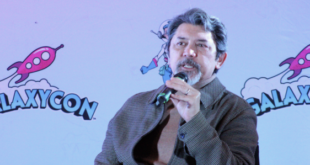
To what extent do reporters from prestigious news sources always maintain their credibility when they are under pressure? All things considered, reporters are human. Sometimes, they are not trustworthy; they tweak the truth. Sometimes editors under the pressure of a digital paradigm shift and/or influence from advertisers to establish a point of view, tweak the truth.
Sometimes editors don’t complete thorough fact checking with due diligence according to journalistic principles. If editors and their reporters are not found out, the news reporting structure is compromised, standards are lowered, unacceptable ethics are tolerated. The foundations of our free press are immeasurably weakened. It is then that the fault line widens toward collapse and there is a complete failure of will to change. When an organization does not live up to its high responsibility of reporting the news without lies of omission or commission, in short, when it betrays the public trust, the situation may never be recoverable.

These issues and many others, including race preferentialism, are raised in the exceptional documentary film, A Fragile Trust directed and produced by Samantha Grant. The documentary which had its North American Premiere at the 21st Hamptons International Film Festival, and was an official selection for the documentary category, concerns Jayson Blair’s serial plagiarism when he was a reporter for The New York Times. Grant is true to her own high ethical standards in explicating what happened. She unravels the myriad reasons why the system broke down and why Blair was able to slip between the raindrops of truth. She shows how he took liberties with the readership’s trust, trashing it, along with his sky-rocketing career at the prestigious paper.
During its own internal investigation, The Times gauged that over a six month period, Blair had plagiarized and/or “tweaked” over half of his nationally filed stories. Grant interviews Blair who, as best as possible, grapples with what he did and candidly discusses why he, in effect, threw away his “golden boy” position as a Times reporter. Grant’s style is both straight forward and unobtrusive. She cobbles together the complicated events and clarifies them through interview clips of Times executive editors, reporters who worked with Blair, reporters from other news agencies, brief shots of Blair’s articles, and thematic symbols which enhance the deeper implications of what happened.

Throughout, her underlying themes are hard hitting. She never swerves from the convoluted and intricate path to seek truth which is at the heart of great journalism and superb documentary film making. One must get the story out, triple fact checked, as truthfully as possible, maintaining the highest standards of journalistic ethics. If it is investigative journalism, as this documentary essentially is, the painful questions must be asked and the sources must be peeled back, or the story has no merit and belies telling. In seeking to tell Jayson Blair’s story and the Times‘ story, Grant fulfills the tenets of fine journalism in her documentary, showing us how it should be done.
In the aftermath of the Blair-Times scandal, Grant reveals through explanations of Times staff that the communication lines had been warped, a tolerance for lowered ethical standards had morphed the MO of various reporters and no one was really watching closely, late in the game. Indeed, Blair had been promoted by editors Gerald Boyd and Howell Raines, much to the consternation and shock of staff and some editors who thought Blair’s promotion might be race based.

By 2003, Blair was finished. He had helped to bring down Raines and Boyd who resigned. The paper was left reeling months afterward, and news outlets everywhere confronted the untenable questions about the integrity of their reporters and editors, what the highest journalistic ethics should be, and the nature of how the newsroom was changing in light of shrinking advertising dollars
The questions news organizations asked then are the questions that Grant puts before us in this vital documentary that, without preachiness, or posturing, shows the extent to which journalism is at a crossroads. The film provokes us as partakers of the cultural currents to sift what news sources present to us. Our trust will be won again and again by accurate reporting that forges ahead, despite the forces that would make it beholden to corporate funding influences or political power structures. Meanwhile, editors are the curators of truth. It is their thorough fact checking and due diligence that ensures their reporters fulfill the high responsibility of telling the truth. It is their encouragement and ethical support that is needed so investigative journalists can seek out the stories that those in high positions would hide from public awareness.
Grant’s film reminds reporting agencies everywhere of the high standards to which they must continually adhere. It reminds the public that they must demand accuracy and not obviate their role in the culture’s social compact.
Grant’s documentary is as riveting as its subject matter was at the time. Like a distant bell that tolls, it calls us to awareness and sounds the import of our responsibilities as citizens. It’s just terrific.
 Blogcritics The critical lens on today's culture & entertainment
Blogcritics The critical lens on today's culture & entertainment



